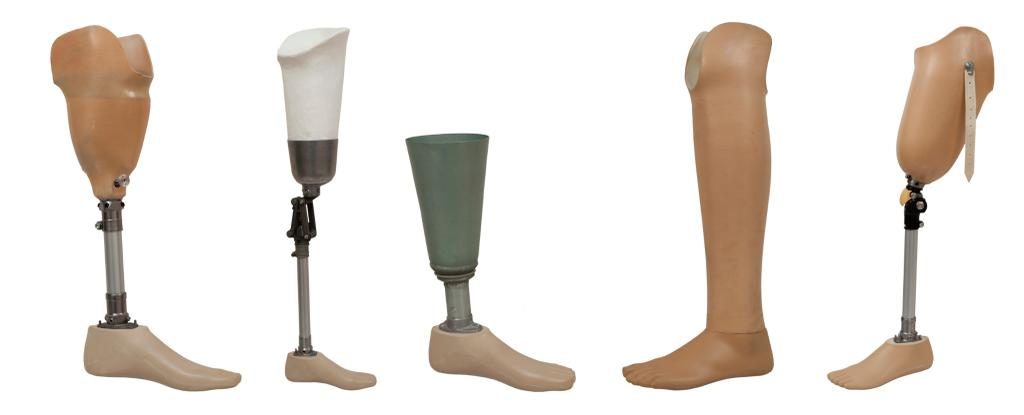What are the advantages of using plastic injection molding in plastics?
- Reduce the initial manufacturing cost
- Lightweight parts
- Optimal function and design
The development of prosthetic has spanned centuries, from the earliest attempts by the Ancient Egyptians, innovations and discoveries during the Renaissance Period, the numerous artificial limbs done during the two World Wars in the 20th century, to the advanced mechanical prosthetic we see today. During these times, numerous materials have been used to create these parts, from wood and copper, to plastic parts that were developed using plastic injection molding from China.
The use of plastic injection molding for prosthetic parts has become more commonplace, as the durable and light qualities of plastic make it one of the best materials to use, along with being cost-efficient and easy to manufacture.
This makes injection molding companies even more important in the prosthetic industry, as their capabilities allow them to quickly manufacture and distribute more efficiently compared to using other materials. Prosthetic is an important part of the medical industry, and injection molding will only help push its development forward.
How plastic shaped modern prosthetics
Before plastic, materials that were used to create prosthetics included copper, iron, wood, brass, and leather. While these materials have their own qualities, the cost of manufacturing them can be costly, especially with using metals. Another issue with these materials is the weight, which can be an even bigger inconvenience for the people using them, as it can hamper the user’s mobility, which can make the recovery and training process take longer.
When it comes to functionality, early prosthetics have numerous limits depending on the design, with a majority of artificial limbs not even having basic movements to perform tasks. While this eventually led to more developments in the field, the prosthetics were still cumbersome and heavy, which is not an ideal combination for an amputee looking to perform basic functions with their new limbs again.
Later on, the early modern period would see more sophisticated designs that utilize springs, gears, and switches to perform more functions and movement. This led to leg prosthetics that helped people walk again, along with arms that have basic mechanics that help people grab objects, and even write using their artificial hand. Prosthetic design has also improved over the years, from simple peg legs and hand hooks that only aim to be static placeholders, to more mechanical designs that aim to replicate the same movement of bones and muscles to emulate human movement.
Eventually, both function and design would be greatly improved over the course of the late 20th century and the 2000s, as the introduction of computers, processing technology and advanced robotics led to more innovations that enabled more functionality and better design. Computers allow more functions and movements to be programmed, enabling more complex actions similar to what human limbs can do.
Advantages of using plastic in prosthetics
The biggest advantage of using plastic in prosthetics is that it reduces the initial manufacturing cost of the limbs. Along with being bulky and limited, older prosthetics are also expensive to build, with certain specifications making that cost even higher. This makes prosthetics something that not every person who needs it will be able to afford, making the goal of helping everyone with missing limbs even more challenging.
With the use of plastic, the cost of manufacturing significantly goes down, making prosthetics more cost-effective and available for more people. Durability has also been improved through the use of plastic, as the material can withstand a multitude of conditions without breaking or corroding. Light, durable, and flexible, the use of plastic allows parts like sensors, motors, and other parts to be integrated into the prosthetic, without adding weight that would hamper the wearer.
Plastic also makes designs look more dynamic and more human-like, as the material can be molded into a variety of shapes that can take the place of some rubber and metal parts.
Injection molding also allows you to reuse the same designs as many times as possible, allowing for mass-production opportunities that were not possible before using the same mold. The simple manufacturing process also means less time to create the finished product, which allows more products to be made in a smaller time frame.
Key Takeaway
Prosthetics have seen numerous innovations over the past few decades, and with the improved technology, along with the use of injection molded plastics, they have continuously improved to become proper substitutes to lost and missing limbs, allowing people to perform the tasks they can do before, and even allowing them to perform new ones as well.
Prosthetics allow people to regain what they’ve lost or have been missing and being able to have today’s generation of artificial limbs made through injection molding allows them to do more than ever. Contact a company that specializes in plastic injection molding in China today to learn more about the capabilities of plastics!
